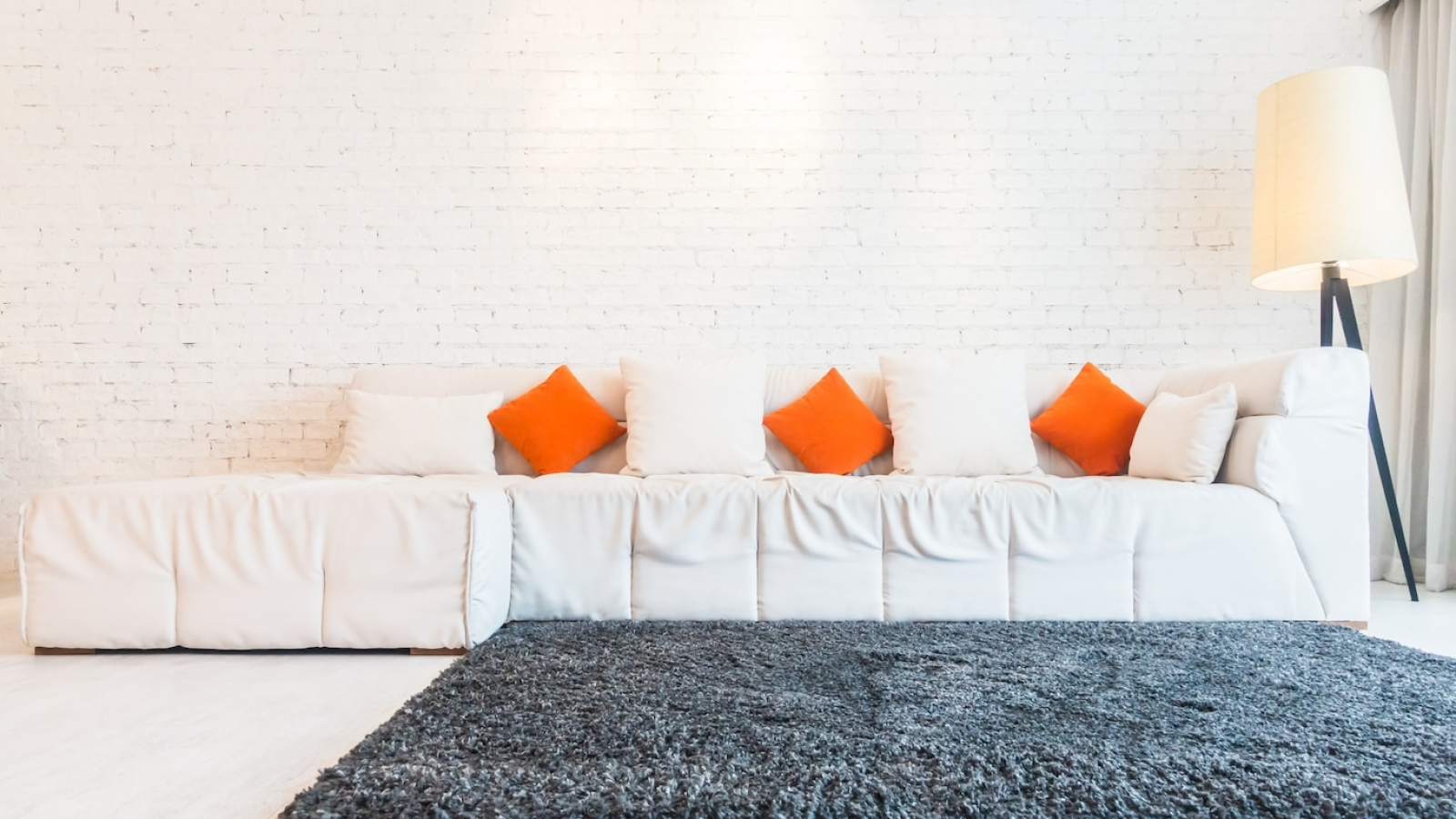Choosing a rug can be more than just a functional decision; it’s an opportunity to express your personal style, enhance your home’s aesthetic, and create a welcoming atmosphere. In this comprehensive guide, we will explore how to select the perfect rug by understanding different styles, sizes, and shapes. Whether you’re looking to make a bold statement or cozy up your space, this is The Ultimate Guide to Choosing the Perfect Rug: How to Find the Right Style, Size, and Shape for Every Room.
The Ultimate Guide to Choosing the Perfect Rug: How to Find the Right Style
The style of a rug can set the tone for an entire room. It’s like the finishing touch that pulls everything together, showcasing your interior design preferences and harmonizing with existing decor. When it comes to style, there are countless options, from traditional to modern, eclectic to minimalistic. Understanding the various styles available and how they interact with your space is essential.
Traditional vs. Modern Designs
When navigating the world of rugs, one of the first decisions you’ll encounter is whether to choose a traditional or modern design.
Traditional rugs often feature intricate patterns, ornate motifs, and rich color palettes. These pieces can evoke a sense of history and luxury, making them ideal for classic interiors or spaces adorned with antique furnishings. They work wonderfully in living rooms, dining areas, or anywhere else you want to create an elegant ambiance.
On the other hand, modern designs embrace clean lines, geometric patterns, and a more muted color palette. They can serve as a breath of fresh air in contemporary spaces, providing a minimalist feel that emphasizes simplicity. Modern rugs often work well in open-concept homes or spaces designed for relaxation.
An insightful approach is to consider how each style resonates with your personal taste and lifestyle. If you have children or pets, a patterned, traditional rug may do a better job of hiding stains and wear. In contrast, a solid, modern piece might provide a sleek look while being easier to clean.
Bohemian and Eclectic Styles
For those who appreciate a more adventurous approach, bohemian and eclectic styles allow for creativity and self-expression.
Bohemian rugs often feature vibrant colors, mixed patterns, and textures that tell a story. They can add warmth and richness to a room and are perfect for creating a relaxed and inviting environment. Pairing a bohemian rug with layered textiles, such as throw pillows and blankets, can make the space even cozier.
Eclectic styles take it a step further by combining various elements from different design trends. An eclectic room may feature a vintage area rug alongside modern furniture or industrial accents. This style encourages mixing and matching, allowing for personalized touches that reflect the owner’s personality.
Embracing these styles can transform an ordinary room into a delightful haven of creativity. By choosing a rug that showcases bold colors or unique designs, you invite conversation and interest into your space.
Minimalist and Scandinavian Influence
Minimalism and Scandinavian design have gained popularity for their focus on simplicity, functionality, and natural beauty.
In a minimalist setting, less is more. Rugs in this style are often neutral in color and devoid of busy patterns, allowing other design elements to shine. This approach creates a serene environment that feels uncluttered and organized. A simple, subtle rug can elevate a minimalist room, grounding the space without overwhelming it.
Scandinavian design takes minimalist principles and adds warmth through texture and organic materials. A soft, woolen rug can introduce comfort while maintaining a clean aesthetic. Look for light hues and natural fibers to achieve that quintessential Scandinavian look.
Both styles emphasize the importance of function and form. A well-chosen rug can enhance the space’s tranquility and cohesion, making it an integral part of the design narrative.
Size
Once you’ve determined the right style for your rug, the next crucial factor is size. An appropriately sized rug can anchor a room, enhance its proportions, and create a welcoming vibe. However, many people struggle with selecting the perfect size, often leading to missteps that diminish the overall design aesthetic.
Understanding Rug Dimensions
When considering rug dimensions, it’s essential to understand the layout of the room and the purpose the rug will serve.
Start by measuring the area where you want to place the rug. Consider how the rug will relate to existing furniture. For example, in a living room, you may want to position the rug beneath the front legs of sofas and chairs to create a cohesive seating area. Alternatively, in a dining room, the rug should extend beyond the edges of the table to accommodate pulled-out chairs.
Additionally, think about the room’s scale. A large rug can make a small space feel larger by defining the area, while a smaller rug might get lost in a vast space. Balancing the size of the rug with the room’s proportions can create harmony and prevent visual clutter.
A personal observation here is that many underestimate the impact of rug size on a room’s energy. A correctly sized rug can create a sense of unity, while an incorrectly sized one can disrupt the flow and make the space feel disjointed.
Placement Options
Rug placement is another critical consideration when determining size. There are several common placements that can help you visualize how your chosen rug will fit into your space.
In living rooms, central placement is a popular choice. Positioning a rug in the middle of the seating area can define the space and encourage conversation.
Alternatively, if you prefer a more casual look, consider placing the rug off-center. This can add character and create a relaxed vibe.
In dining rooms, the rug should ideally extend at least 24 inches beyond the table’s edges. This ensures that guests can comfortably move their chairs in and out without catching them on the rug’s edge. It also visually separates the dining area from the surrounding space.
Taking the time to experiment with various placements using painter’s tape or fabric can help you see how different ideas will look before committing to a purchase.
Layering Rugs
Layering rugs has become an increasingly popular trend in interior design, adding depth and dimension to any space. This technique allows you to play with colors, textures, and patterns while enhancing the overall aesthetic.
When layering rugs, it’s important to consider both size and style. A larger, neutral base rug can act as a canvas for a smaller, more colorful accent rug. This can create visual interest and warmth without overwhelming the space.
Personal analysis reveals that layering can significantly shift a room’s dynamic, giving it a relaxed, bohemian feel or a curated, sophisticated touch, depending on your choices. Experimentation is key—feel free to mix and match until you find the perfect combination that pleases your eye.
And Shape for Every Room
After determining the ideal style and size for your rug, the final element to consider is shape. The shape of the rug can drastically alter a room’s perception, influencing how it’s experienced and how the furniture interacts within it.
Common Rug Shapes
Rugs come in various shapes, with rectangular, square, round, and oval being the most common. Each shape serves different purposes and complements distinct room layouts.
Rectangular rugs are perhaps the most versatile option, fitting seamlessly in long spaces like living rooms or hallways. They can also provide an excellent backdrop for multiple furniture arrangements, making them a favorite choice among homeowners.
Square rugs can create symmetry and balance in a room, especially in spaces where the furniture arrangement is equally proportioned. They’re particularly appealing in square dining rooms or intimate living areas.
Round rugs offer a softer alternative to angular shapes, adding a layer of coziness and flow. They work beautifully under circular tables or in spaces where a sense of movement is desired. Experimenting with round rugs can also soften harsh lines and create a more inviting atmosphere.
Oval rugs blend the properties of rectangular and round options, providing a unique touch that’s perfect for elongated spaces like dining areas or entryways.
Choosing the Right Shape for Your Space
Selecting the right shape involves considering the room’s layout, furniture arrangement, and the visual flow you wish to achieve.
In a narrow hallway or corridor, a rectangular rug can elongate the space and guide the eye toward the end. Conversely, a round rug in a spacious entryway can create a focal point, drawing attention and welcoming guests.
In dining rooms, the shape of the table often dictates the shape of the rug. A rectangular table pairs nicely with a rectangular rug, while a round table often looks best atop a round or oval rug. Ensuring that the rug extends beyond the table’s edges helps the area feel complete.
Consideration must also be given to traffic flow. Round and oval rugs can mitigate sharp edges and promote smoother transitions between spaces, especially in high-traffic areas.
Mixing Shapes for Interest
While there are guidelines for selecting rug shapes, don’t hesitate to mix and match to create visual intrigue. Pairing a rectangular area rug with a round coffee table can lead to stunning contrasts that add personality to your space.
Experiment with layering different shapes to enhance texture and visual complexity. A round rug layered over a rectangular one can create a cozy nook within a larger room, offering both comfort and style.
Engaging in this sort of experimentation can reveal surprising combinations that redefine your space. More importantly, it allows for the expression of individuality, ensuring your home reflects your unique personality and taste.
Conclusion
Choosing the perfect rug is a multifaceted endeavor that requires careful consideration of style, size, and shape. By exploring each aspect comprehensively, you can ensure that your rug enhances the overall design of your space while providing warmth and comfort. Remember, your rug should not only complement your decor but also resonate with your personal style and lifestyle needs. With The Ultimate Guide to Choosing the Perfect Rug: How to Find the Right Style, Size, and Shape for Every Room, you’re now equipped to make informed choices that will elevate your home’s aesthetic and create inviting environments for years to come. Happy decorating!

 Cart is empty
Cart is empty 
Add a Comment